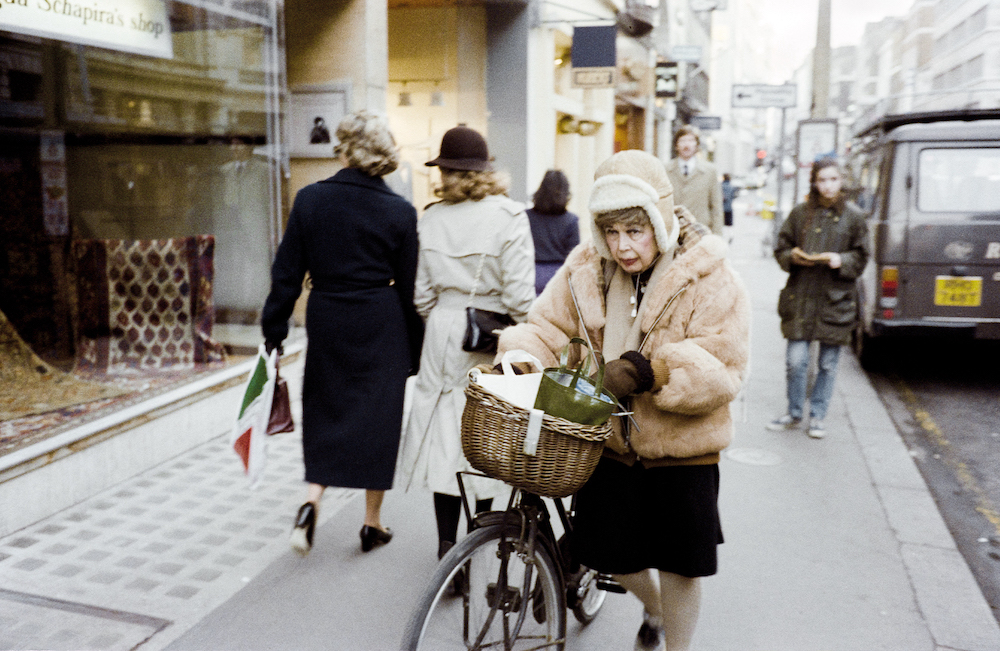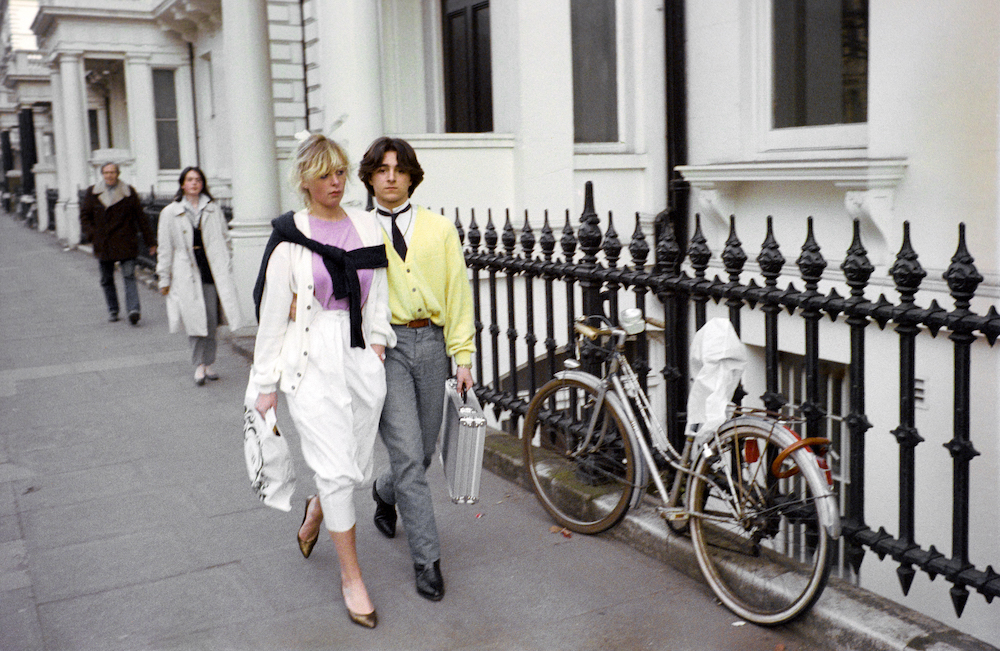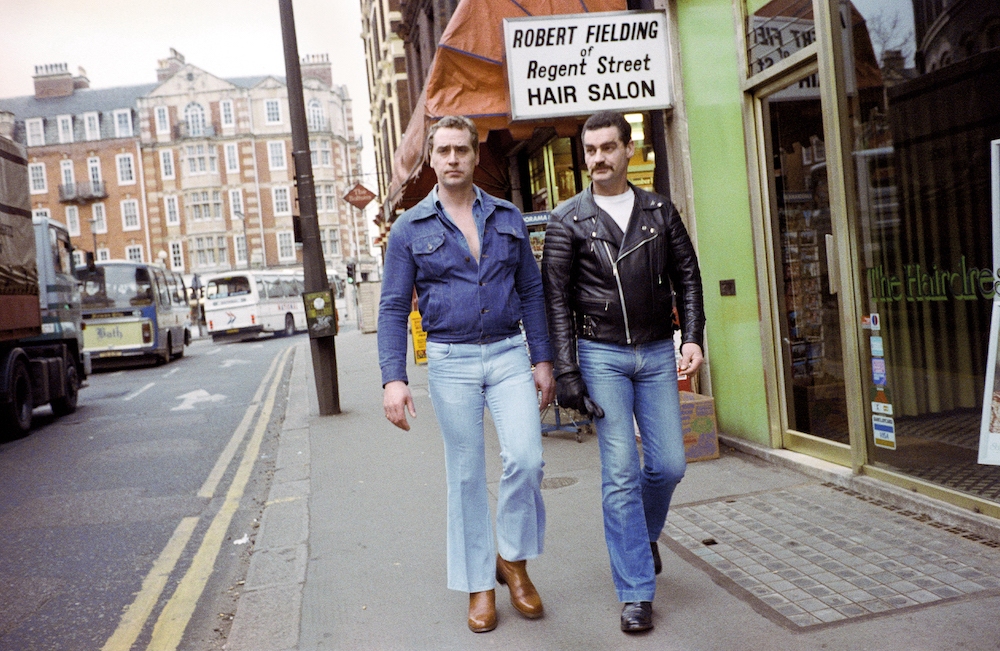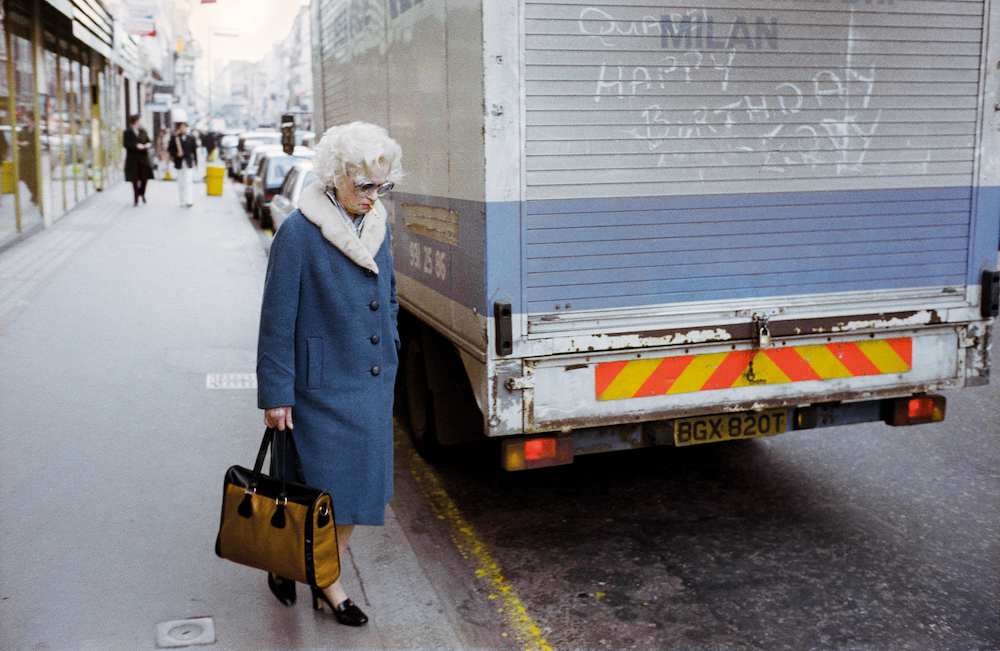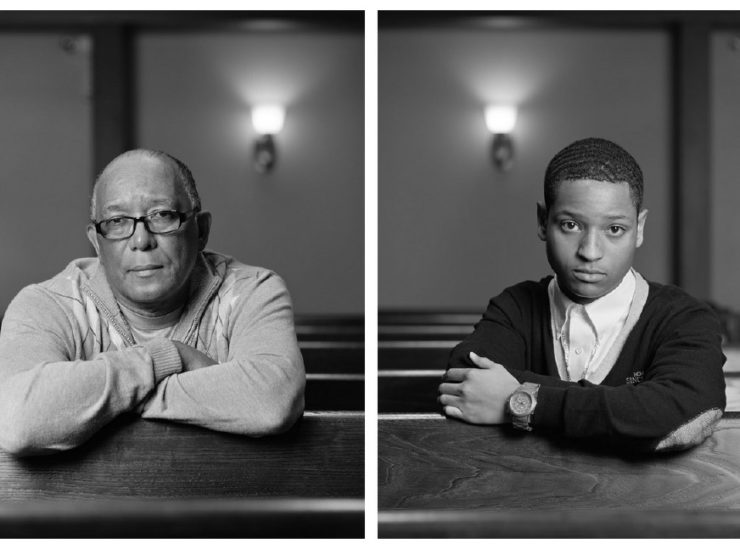Roaming central London, the Indian photographer creates spontaneous portraits of the curious characters that populated the city when he first moved there
When the Indian photographer Sunil Gupta arrived in London in the early 1980s to study at the Royal College of Art, he hit the streets with his camera in search of connections with the city’s gay community. “I wanted to continue my earlier series, Christopher Street, which I shot in New York, as I’d had a disruptive break of moving to London and then to Surrey, and then back to London again,” he remembers. A series of black-and-white street portraits shot on the same road, Christopher Street was made in 1976, post-Stonewall riots and pre-Aids epidemic. Gupta and his contemporaries were busy, “creating a gay public space such as hadn’t really been seen before,” he says.
In the 1980s, there was no space in England’s capital that could compare to Christopher Street, but there was a similar scene in west London, where Gupta lived. It was not as concentrated though, and the artist soon realised that a new project focusing so specificallly on gay life would not be possible in the same way. Instead, his locations and his subjects began to emerge from his daily explorations. Walking between Hammersmith and Fulham, commuting to South Kensington and Oxford Circus, he started to pick out subjects for his pictures from the passing characters. “I photographed whoever caught my eye then; gay men, people of colour, the elderly, and the odd mixture of people on the King’s Road,” he says.
Gupta has recently returned to the pictures he shot back then, collecting them in a new photobook, titled London ’82 and published with Stanley/Barker. He rediscovered them while digitising his past work, he says. “I had been scanning my negative archive on and off since 2003, but by 2017 I was able to bring everything into one studio space and have former students help me bring the scanning to a conclusion,” he explains. “These were just low-res scans to see what was on screen, but this series of pictures stood out. Initially I made 100 postcard-size prints. Then I spread them out on the biggest table I had and did the editing that way.”
He gradually showed the pictures to people, and it was his former tutor, Anne Williams, who suggested they would make an interesting book. At the time, he was working on publishing Christopher Street, so it felt like a natural progression.
“I think it’s a bridging moment for my practice, which was coming from a very US-centric, Euro-modernist place where documentary and the street were being foregrounded. My photo education in England made me question a lot of those values, so in a sense I was critiquing in the classroom what I was practising in the streets.”
London ’82 is an odyssey through the capital’s streets and back again, seen through Gupta’s eyes at a specific and formative moment in his personal history. The images detail fur coats and fabulous outfits, bus queues and markets, graffiti and glances directly into the lens. There are portraits of teens and pensioners, families and clusters of friends. They show all ages, all walks of life; the whole spectrum of a lived experience that made up the city’s community at that time. A colourful catalogue of expressions and conversations is revealed too, and each image tells an individual story. One of Gupta’s favourite pictures from the series reflects this point. In it, an elderly man walks past a high-end designer store. “
I like the warmth of the shop interior against the coldness of the light outside in this one,” he says. “The man appears to be ashen-faced; a feature that drew me to this frame. He’s a kind of caricature capitalist out and about probably wondering ‘how to spend it’ [according to the FT]. But in his colourlessness he looks like he’s had his life sucked out of him. It’s in contradiction to the wealth on display in London’s West End.”
The images in London ’82 are, in some ways, a continuation of Christopher Street – they share the same spontaneity and curiosity for passers-by, for instance. But they also mark a new way of looking at Gupta’s artistic development. “I think it’s a bridging moment for my practice, which was coming from a very US-centric, Euro-modernist place where documentary and the street were being foregrounded,” he says. “My photo education in England made me question a lot of those values, so in a sense I was critiquing in the classroom what I was practising in the streets. After this, I mainly shot people I either knew or had permission from. But going out into the street has been ingrained in me and it’s something I find I easily return to, especially in a new place or to look harder at my everyday surroundings.” Three decades later, this impulse can still be seen in the projects he is making now. One example, he says, is his latest series, Walworth Road – a visual study of his social surroundings during Covid times.
The post Sunil Gupta collects his archive of London’s street passers-by in the 1980s in a new book appeared first on 1854 Photography.

